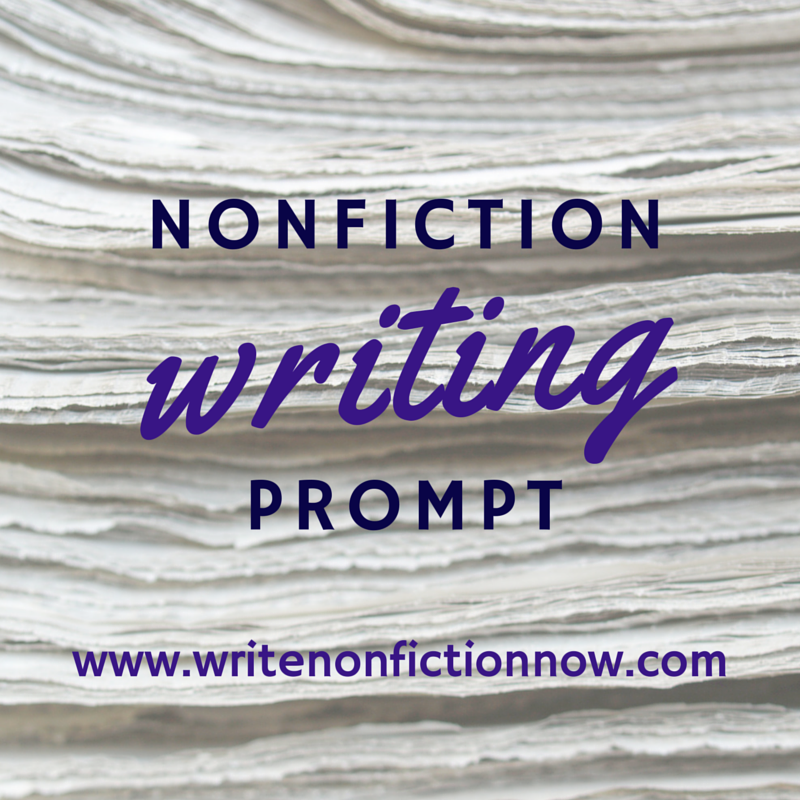Your author website serves as your home in cyberspace. It’s also a showcase for your books and accomplishments as a writer. It’s a reflection of you and your brand. The media, as well as potential readers, customers, and clients, discover you and your work when they discover your site. As such, it’s where you make a first impression.
As you may have heard, you have only one chance to make a first impression—and you want to make a good one.
To ensure you do, indeed, make a good impression with your author website, it’s important to regularly review it and determine how to improve all its aspects. There’s always something you can do to make your website look better or to get your message across more effectively or increase performance.
How to Complete Nonfiction Writing Prompt #45
To complete this prompt, review the following seven aspects of your website for potential improvements. Make a list of the improvements or changes you need to make. Then make those improvements within the next 14 to 30 days.
Here are the seven aspects to review:
- Your banner. People first notice the top portion of your website. This area might include a banner, a photo of you or a logo, depending on the theme you have chosen for your site. Make sure that banner creates the feeling or atmosphere you desire and quickly conveys the message you want to share. You have about 20 seconds or so to capture a visitor’s attention and keep them on your site.
- Your URL. Your URL is your address in cyberspace. It’s how people find you on the Internet. Do you know what URL will help attract the most people to your site or support your brand? You can use your name, the name of one of your books, the title of your blog, or something related to your expert status. For example, my primary site has a URL based upon my name: ninaamir.com. I have other sites, like this one, that have URLs based upon the topic, keywords, and name of the site: writenonfictionnow.com. I also own the URL inspirationtocreationcoach.com, because I call myself the Inspiration to Creation Coach, and I have that URL redirected to ninaamir.com. No matter what URL you’ve originally chosen, at any time you can select another you feel will work better. Then redirect that address to your site to help it become more discoverable.
 Your call to action. What are you giving away for free to compel people to subscribe to your mailing list? It’s time to re-evaluate your call to action and determine if it is bringing in enough subscribers. If it isn’t, create a new one that provides more value to your visitors. (If you’ve used the same one for a long time, you might want to develop a new one—one less the old one works great.) And if you don’t have a call to action or an email list, create one now!
Your call to action. What are you giving away for free to compel people to subscribe to your mailing list? It’s time to re-evaluate your call to action and determine if it is bringing in enough subscribers. If it isn’t, create a new one that provides more value to your visitors. (If you’ve used the same one for a long time, you might want to develop a new one—one less the old one works great.) And if you don’t have a call to action or an email list, create one now!- Your social share tools. Are you making it easy for blog readers or site visitors to share your posts or pages? If not, get some sharing tools installed pronto! And don’t just have them at the bottom of a post; install them at the top as well (something I’m about to do). Sometimes a reader won’t get to the bottom of your blog post—or even past the title—but will want to share the post anyway. Sharing tools provided at the top of the post make it easier to do so and increase the number of shares your posts receive. Your blog readership and your reach increase each time your work gets shared, so help your readers share.
- Your bio. Third person, formal bios used to be standard on a website. Not any more—especially if you have a blog. Reread your bio. Is it boring? Rewrite it as a story. Compel people to follow you because you’ve offered an authentic view of or story about yourself that helps them know, like and trust you.
- Your About page. Your website should have an About page that helps visitors not only determine if you have something valuable to offer them but that also helps them navigate your site. Rewrite this page and include information on where to start, popular posts, or anything else you feel would be important for them to read or consider.
- Your blog. When was the last time you published a post? How effective are your posts (how many readers or shares do they get)? Your blog is the most important page on your site. It showcases your work and knowledge, provides superb search engine optimization (SEO), and helps your site move up in the search engine results pages (SERPs). Determine if you need to up your game by publishing posts more often and doing a better job with those posts. Do you need to learn how to write more effective posts or headlines or find more powerful photos? Whatever it is you need to do to improve your blog, do it—fast! Your blog provides a flag that attracts people to your site. Be sure to raise your flag high so prospective readers see it often.
- Your tagline. At the top of your website’s home page, in the banner or embedded in your theme or logo, you should have a statement that states what you do for your readers or what your site does for visitors. As mentioned, you have an extremely short amount of time to prove your website is relevant to those who visit. Your tagline provides the key that opens the door to those who show up. Make sure it clearly informs visitors of the benefit they get out of remaining on site to explore your content.
If you need more help blogging, you can sign up for Blog Coaching. Or read my newest ebook, Blogging Basics for Authors. It’s a great guide for improving your author website in 30 days.
If you want more information on how to develop nonfiction books and create a career or a business around them, join the Nonfiction Writer’s University (NFWU). The July NFWU challenge encouraged members to become better bloggers. They each received a FREE copy of Blogging Basics for Authors to help them meet the challenge.
 For more information on writing all types of nonfiction, join the NFWU. When you do, you’ll receive 19 months of Nonfiction Writers’ University (NFWU) challenges, assignments and event recordings with a variety of experts in the field. Upcoming events include podcaster Scott Smith (The Daily Boost) and publishing expert Jane Friedman (former publisher at Writer’s Digest Books). Plus, you’ll have access to live coaching (and archived replays of past coaching sessions) as well as introductory gifts worth almost $150 in value! Members also get additional bonuses during the year.
For more information on writing all types of nonfiction, join the NFWU. When you do, you’ll receive 19 months of Nonfiction Writers’ University (NFWU) challenges, assignments and event recordings with a variety of experts in the field. Upcoming events include podcaster Scott Smith (The Daily Boost) and publishing expert Jane Friedman (former publisher at Writer’s Digest Books). Plus, you’ll have access to live coaching (and archived replays of past coaching sessions) as well as introductory gifts worth almost $150 in value! Members also get additional bonuses during the year.
Next NFWU event:
8/25 at 3 pm PT: Harnessing The Power of a Podcast to Build Your Business with Scott Smith, who has the most downloaded self-help podcast in the history of iTunes and teaches a course called Podcast Persuasion. (Membership required.) To find out more about or to join the NFWU, click here.